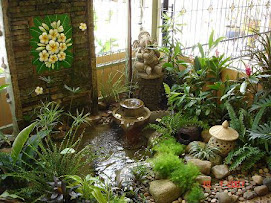Flowers that go with our Roses
By Carole Nixon
There are many flowers that go with our roses. To start with the dwarfs, for spring we can have Snowdrops, Muscari or Grape Hyacinths, winter Aconite, small Narcissus, and Scilla, or the dainty blue and white Chionodoxa. All do well underneath the branches of the rose trees.
Flowers such as Forget-me-nots, spring Anemones, young Wallflowers, Aubrietia,and Violets can be used for planting between the trees. Make sure the Violets and Wallflowers are taken up as soon as they have finished flowering, as they tend to tangle with the roots of the roses. Don't throw them away, separate them or cuttings may be taken. Put out in a shaded place until autumn comes round, then return them to their beds.
Summer friends
More subdued colors must be used for summer. The brown Wood-Sorrel, Oxalis, which is only about two inches high, looks very pretty. The leaves are shaped like a shamrock, but a rich brown, and it displays tiny yellow flowers which only come out when the sun shines on them. It is brought up from seed, and if it is sown one spring there will be no further trouble, as it comes up every year. Don't allow it to get too big, or reach too close to the stems of the roses.
There are a few lowly Campanulas also suited for carpets. If the soft shades are used, Violas and Pansies look happy amongst the roses. They like the same soil, and both, particularly Pansies, do not like a blaze of sun, and for that reason will do very well with the roses.
Saxifrages make a nice carpet, and are great for edgings. S.Caespitosa, S.Hypnoides, and others of the mossy tribe, are very lovely if not allowed to grow too thick. Thrift is another good edging for rose beds. Where the beds or borders abut on a gravel path edging is needed and turf makes the best frame of all.
Annuals
Annuals Shirley and Iceland Poppies, Leptosiphon, Whitlavia, and Godetia are good plants for associating with roses. Care must be taken to see that the color of the annual blends in with that of the roses. The Poppies, shades of yellow and orange, should only be planted amongst cream roses or yellow roses,and the Leptosiphon, being rose pink, only amongst white roses, or those of a similar shade of pink.
Round the standards
The taller Salpiglossis look stunning grouped around the stem of a rose, and are such stylish annuals that they enhance the beauty of flowers overhead.
Coreopsis Tinctoria, which has yellow flowers with brown centers is also very good for this purpose. The Salpiglossis give blooms of several shades if a mixed packet of seed is sown, purple, tawny, terracotta, and many other standard shades. It is a very good idea to buy the seedlings when a few inches high and the outcome is more certain.
Japanese Pinks are pretty, and so easy to grow. Their fringed crimson and white flowers can be cut in quantities without detracting from the appearance of the rose beds, and they keep on blooming right up to the frosts. Statices are much used rather than grasses, their endless tiny flowers are so light and airy, and are produced very abundantly. They grow from eighteen inches to two feet high, and take away from the bare effect of the rose stems very well indeed. Celosias, too, are feathery annuals to be had in different colors. The golden colored variety is the most distinct and has a good effect grouped round some cream standard roses.
These annuals should be treated as half hard. If an early show is desired, frames must be brought into use or the young plants can be bought.
Plants with a greater quantity of foliage and deeper roots can be used, when rose trees are far apart. Columbines are well adapted for grouping with roses, especially when these are growing in shady places. They do not flower for such lengthy periods as the annuals, but their leaves are very fresh, and plants which flower later can be mixed with them.
Article Source: http://www.Free-Articles-Zone.com



No comments:
Post a Comment